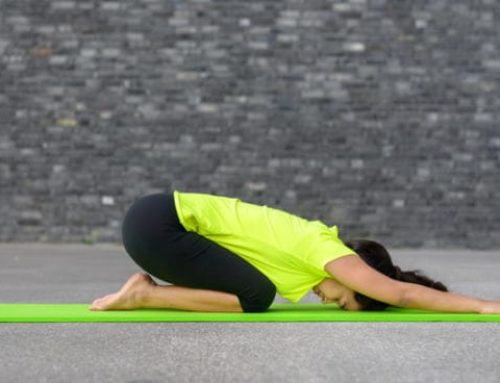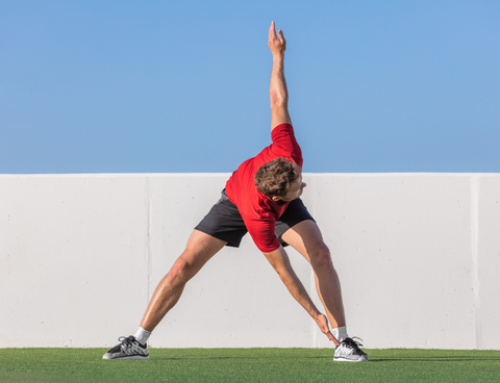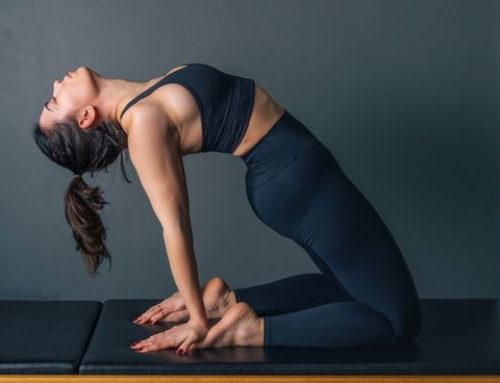Relieve Tight Hips With the Deep Squat to Hamstring Stretch
![]()
When is the last time you practiced the Squat pattern with full range of motion at the hips? Chances are it’s been a while, even if you are an active person who trains, stretches and even spends a few minutes on a foam roller now and then.
Way back in the day, the deep Bodyweight Squat was a staple of human movement. Many people in the world’s undeveloped cultures lacked chairs to sit in, or desks to enslave them 8-plus hours a day to make a living. Without the need or option to sit on an elevated surface with back support, people naturally moved into deep squat positions to de-load the spine, improve hip mobility and create more pain-free function throughout the body. These people weren’t sold on any ideas of posture or performance. Our ancestors gravitated to the butt-down-to-the-heels position because it was their only option, and guess what? It worked on many aspects of human movement, including injury prevention.
RELATED: Fix Hip Flexibility Problems With This Simple Exercise
As our general orthopedic health becomes more rundown and dysfunctional by the decade, it’s time for us to revert to more “primitive” movement patterns. And while we’re at it, let’s make some intelligent progressions from the foundational Deep Squat Hold to make the exercise one of the most powerful mobility tools for hip, spinal and hamstring function.
Deep-Squat To Hamstring Stretch
The Deep Squat Hold is one of the best ways to maintain and optimize deep hip flexion and external rotation while de-loading force from the spine and pelvis. But to improve mobility and athletic performance, it has an upgrade. The Deep Squat to Hamstring Stretch is a great corrective exercise and mobility drill for the pre-training warm-up. It targets key muscles in the lower body and spine while also improving gross movement patterns due to moving in and out of two key positions.
RELATED: Essential Hip Flexor Strengthening Exercises
The first position, the Deep Squat, is similar to the Squat in terms of foot position—approximately shoulder-width apart with the toes angled out a bit. As you might guess, many people are squatting with an incorrect foot position. That can be fixed by getting into the Deep Squat and moving around a little, scooting your feet in and out, and determining which width and toe angle feel best in your hips, back and pelvis. The position should allow you to get your butt as close to the ground as possible.
After determining the optimal foot position, hinge at your hips and grab your toes, keeping your legs straight to stretch your hamstrings. If you cannot get all the way down, bend your knees slightly and grab the fronts of your feet. From there, actively straighten your legs to get a hamstring stretch. Hold for a second or two, then transition into the Deep Squat.
From the Hamstring Stretch, slowly and with control bend your knees and sit your butt down into a Deep Squat. Sit there for a few seconds, then reverse the movement to get back into the Hamstring Stretch.
Programming The Mobility Drill
Before you incorporate this drill into your dynamic warm-up, make sure you can perform the movements, moving in and out of the Hamstring Stretch and Deep Squat positions, smoothly and in a coordinated fashion. Start with 10-12 repetitions, counting a Hamstring Stretch to Deep Squat Hold as a single rep. Don’t rush, but try to make it as smooth as possible while improving your range of motion with each rep.
RELATED: 4 Hip Flexor Stretches to Relieve Tight Hips
This drill, when executed properly, provides a huge bang for your buck in preparing you for training, practice or competition. Spend the time and master the basics, then enjoy the mobility and control you develop.
[cf]skyword_tracking_tag[/cf]RECOMMENDED FOR YOU
MOST POPULAR
Relieve Tight Hips With the Deep Squat to Hamstring Stretch
![]()
When is the last time you practiced the Squat pattern with full range of motion at the hips? Chances are it’s been a while, even if you are an active person who trains, stretches and even spends a few minutes on a foam roller now and then.
Way back in the day, the deep Bodyweight Squat was a staple of human movement. Many people in the world’s undeveloped cultures lacked chairs to sit in, or desks to enslave them 8-plus hours a day to make a living. Without the need or option to sit on an elevated surface with back support, people naturally moved into deep squat positions to de-load the spine, improve hip mobility and create more pain-free function throughout the body. These people weren’t sold on any ideas of posture or performance. Our ancestors gravitated to the butt-down-to-the-heels position because it was their only option, and guess what? It worked on many aspects of human movement, including injury prevention.
RELATED: Fix Hip Flexibility Problems With This Simple Exercise
As our general orthopedic health becomes more rundown and dysfunctional by the decade, it’s time for us to revert to more “primitive” movement patterns. And while we’re at it, let’s make some intelligent progressions from the foundational Deep Squat Hold to make the exercise one of the most powerful mobility tools for hip, spinal and hamstring function.
Deep-Squat To Hamstring Stretch
The Deep Squat Hold is one of the best ways to maintain and optimize deep hip flexion and external rotation while de-loading force from the spine and pelvis. But to improve mobility and athletic performance, it has an upgrade. The Deep Squat to Hamstring Stretch is a great corrective exercise and mobility drill for the pre-training warm-up. It targets key muscles in the lower body and spine while also improving gross movement patterns due to moving in and out of two key positions.
RELATED: Essential Hip Flexor Strengthening Exercises
The first position, the Deep Squat, is similar to the Squat in terms of foot position—approximately shoulder-width apart with the toes angled out a bit. As you might guess, many people are squatting with an incorrect foot position. That can be fixed by getting into the Deep Squat and moving around a little, scooting your feet in and out, and determining which width and toe angle feel best in your hips, back and pelvis. The position should allow you to get your butt as close to the ground as possible.
After determining the optimal foot position, hinge at your hips and grab your toes, keeping your legs straight to stretch your hamstrings. If you cannot get all the way down, bend your knees slightly and grab the fronts of your feet. From there, actively straighten your legs to get a hamstring stretch. Hold for a second or two, then transition into the Deep Squat.
From the Hamstring Stretch, slowly and with control bend your knees and sit your butt down into a Deep Squat. Sit there for a few seconds, then reverse the movement to get back into the Hamstring Stretch.
Programming The Mobility Drill
Before you incorporate this drill into your dynamic warm-up, make sure you can perform the movements, moving in and out of the Hamstring Stretch and Deep Squat positions, smoothly and in a coordinated fashion. Start with 10-12 repetitions, counting a Hamstring Stretch to Deep Squat Hold as a single rep. Don’t rush, but try to make it as smooth as possible while improving your range of motion with each rep.
RELATED: 4 Hip Flexor Stretches to Relieve Tight Hips
This drill, when executed properly, provides a huge bang for your buck in preparing you for training, practice or competition. Spend the time and master the basics, then enjoy the mobility and control you develop.
[cf]skyword_tracking_tag[/cf]









